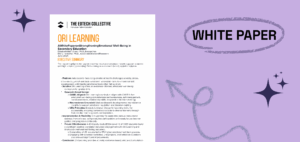Understanding and managing emotions are vital life skills for everyone, and that’s where social-emotional learning (SEL) comes in.
SEL programs give you the tools to help your students build emotional literacy, equipping them to navigate relationships and overcome any challenges they may face, helping them succeed in school and beyond.
In this article, we’re exploring why emotional literacy matters and how it ties into SEL. We’ll also be sharing practical strategies you can use to teach emotional regulation, integrate SEL into your curriculum, and address common challenges like bullying and balancing academic goals with emotional growth.
Importance of Emotional Literacy and Social-Emotional Learning (SEL)
Emotional literacy and SEL play a key role in supporting students’ relationships and personal well-being.
When students develop emotional literacy, they learn to identify and manage their emotions, which has been proven to help them communicate effectively and build meaningful connections. You can use the tools and structures provided in SEL programs to cultivate these skills, helping your students prepare for challenges they’re likely to face academically and outside of school.
Add resource here
Emotional Intelligence & Its Role in SEL
Emotional intelligence (EI) is a central part of SEL and focuses on recognizing and managing emotions, both in yourself and in others. These abilities help us to succeed in various settings, from classrooms to workplaces.
Research has consistently shown that students with strong EI are more likely to achieve better academic results and adapt well to complex social environments.
Daniel Goleman’s research on emotional intelligence shows us how powerful these skills can be in education. By helping your students build self-awareness, empathy, and strong relationship skills, you’re equipping them with practical tools they can use in their daily lives to connect with others and handle challenges effectively.
The Link Between Emotional Competence & Bullying
When you help students develop their emotional literacy and SEL skills, you’re also addressing issues like bullying. Students are less likely to act out in harmful ways if they understand their own emotions and recognize how others feel, and SEL has been proven to reduce problem behaviors that interfere with learning and development.
Supporting your students’ understanding of their emotions through SEL programs creates an environment where empathy becomes second nature. This can help you reduce conflict and establish a culture of respect and kindness in your school.
Effective Strategies for Teaching Emotional Regulation in SEL Programs
Teaching emotional regulation works best when you use creative, engaging strategies that connect with your students.
Some of the most effective ways to explore social-emotional themes include dialogic reading and literature circles. Facilitating open discussions about characters’ emotions and choices helps your students build their academic skills and emotional awareness. These encourage your class to have meaningful conversations that make SEL relatable and relevant.
Integrating Emotional Literacy with Literature
Steph Whiting’s character therapy approach highlights how you can combine emotional competence with literary analysis.
When you guide students to connect emotionally with characters, they begin to reflect on their own experiences. This improves their understanding of literature and builds their self-awareness and empathy.
Combining Multimedia and SEL
Pairing books with multimedia tools like video games has been shown to be an effective way to enhance literacy and learning, adding an exciting dimension to SEL. The interactive storytelling provided by these tools lets students practice emotional regulation and problem-solving in real-time scenarios.
This method is a good option for engaging middle and high school students who do best in hands-on, immersive learning environments. It’s an effective way to make lessons stick while keeping your students actively involved.
Practical Tools for Emotional Awareness
Tools like Emotional Mapping and Mood Meter are also worth considering for teaching emotional regulation in SEL programs. These give your students practical ways to recognize and regulate their emotions.
Your students can use these strategies to link their feelings to learning objectives, making it easier for them to stay focused and bounce back from issues they may face inside and outside of the classroom. By introducing them to your class, you’re equipping students with lifelong skills for emotional and academic success.
Support your students’ emotional growth with the right tools and resources. Learn more about how Ori Learning’s SEL curriculum can build strong emotional awareness and lasting relationships.
Building Accountability Through Peer Activities
Peer reflection and role-play exercises have both been proven to be powerful tools for supporting students’ emotional intelligence. These emotional literacy and SEL activities encourage students to take responsibility for their actions and develop accountability.
For example, Two Rivers Public Charter School has incorporated these methods to create a culture of care and excellence. You can adapt similar practices in your school to nurture emotionally intelligent leaders.
Using Oral Histories to Teach Empathy
Oral history projects, like those led by Voice of Witness, can help your students develop empathy by engaging with real-world stories.
You can implement these projects to encourage your students to explore diverse perspectives and connect lessons they learn in the classroom to broader social contexts. When students hear firsthand accounts of others’ experiences, they gain a deeper appreciation for different lives and challenges.
Voice of Witness’s artifact interviews and Youth Participatory Action Research (YPAR) activities are excellent examples of how you can incorporate oral histories into SEL. These activities have been shown to strengthen emotional and social skills and inspire students to engage with their communities in meaningful ways.
Challenges and Solutions in Implementing Emotional Literacy Interventions
Bringing SEL programs into your school can present unique challenges. Here are some of the most common challenges you might face, and how to solve them:
No Consistent Tools For Measuring Emotional Intelligence
One of the biggest obstacles you may have to deal with is not having consistent tools for measuring SEL and emotional intelligence. Without clear, standardized methods, it’s tough to track your students’ progress or show the impact of your efforts.
To solve this problem, we need to look at the bigger picture. Schools, researchers, and policymakers need to work together to create reliable ways to measure success.
Balancing SEL and Academic Priorities
Another common challenge when implementing emotional literacy and SEL practices is the overwhelming focus on data-driven instruction. There’s no denying that academic performance is important, but we shouldn’t allow it to overshadow the need for social and emotional development.
Preparing students for real-world challenges means we should value their emotional growth just as much as test scores. You can integrate SEL into your curriculum by taking a balanced approach that prioritizes your students’ emotional well-being alongside their academic achievements.
Addressing the Root Causes of Bullying
If your school’s anti-bullying program is falling short, it might be because it’s not tackling the underlying issue: low emotional intelligence.
Students who struggle to understand or regulate their emotions are more likely to act out aggressively. Embedding SEL into your school’s broader strategies should help you address these root causes, reducing bullying and promoting a school culture of empathy and respect.
Tailoring SEL to Your School’s Needs
For your school’s SEL programs to truly make a difference, they should reflect your students’ unique needs. That means understanding your students’ challenges and strengths, and designing initiatives that connect with their experiences.
Collaboration is key here. You can partner with parents, staff, and local organizations to strengthen your efforts and help embed SEL into your school’s culture. When everyone works together, your programs are more likely to create lasting, positive change.
Implementing Emotional Literacy and SEL In Classrooms: Next Steps
By this point, you should now have a good understanding of how emotional literacy and SEL can transform how your students understand themselves and their emotions.
Using strategies that have been proven effective, like peer reflection, multimedia tools, and creative classroom activities can help your students build skills that improve their relationships and prepare them for challenges.
Ready to integrate emotional literacy into your classroom? Request a demo today to explore how Ori Learning’s SEL curriculum can equip your students with the skills they need to succeed academically and personally.
SEL and literacy instruction go hand in hand. When students develop emotional skills, they gain the tools to better understand and engage with texts. You can integrate SEL into your literacy lessons by encouraging students to reflect on characters’ emotions and relate them to their own experiences.
The SEL theory focuses on developing students’ ability to recognize and manage their emotions, form positive relationships, and make responsible decisions. This helps them build their emotional intelligence, which in turn supports their academic success and personal well-being.
Social emotional literacy is a term that’s used to describe the ability to understand and manage emotions in yourself and others. It involves recognizing your feelings and practicing empathy, using this awareness to guide and adapt your behavior across different social situations.
Without proper social emotional development, a child may struggle with managing their emotions and handling social situations. You’ll likely see challenges in their behavior and communication, as well as their academic performance, and they may also find it difficult to adapt to new environments.




